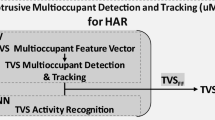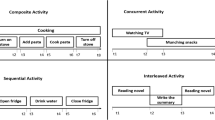Abstract
Human activity detection is basic requirement especially within smart environments like smart homes. The primary requirement of smart environment is energy conservation. To achieve this, first target is to detect the human activities accurately using neural network-based approach. This paper presents a unique combination of CNN with pruning and edge detection mechanism to accurately detect human activities. The entire process of human activity detection is portioned into set of phases. In the first phase, data acquisition is performed. The CNN with pruning and edge detection utilized KTH dataset derived from Kaggle. In the second phase, pre-processing to eliminate the noise from the image frames. In the third phase, edge detection and feature extraction were ensured. In the last phase, classification is performed. The result of the human activity detection mechanism is expressed in the form of classification accuracy. High classification accuracy of over 95% is observed.
Access this chapter
Tax calculation will be finalised at checkout
Purchases are for personal use only
Similar content being viewed by others
References
Li F, Shirahama K, Nisar MA, Köping L, Grzegorzek M (2018) Comparison of feature learning methods for human activity recognition using wearable sensors. Sensors (Switzerland) 18(2). https://doi.org/10.3390/s18020679
Khelalef A, Ababsa F, Benoudjit N (2019) An efficient human activity recognition technique based on deep learning 29(4):702–715. https://doi.org/10.1134/S1054661819040084
Oukrich N, Cherraqi EB, Maach A (2018) Human daily activity recognition using neural networks and ontology-based activity representation. Lect Notes Networks Syst 37:622–633. https://doi.org/10.1007/978-3-319-74500-8_57
Marinho LB, de Souza Junior AH, Filho PPR (2017) A new approach to human activity recognition using machine learning techniques. Adv Intell Syst Comput 557:529–538. https://doi.org/10.1007/978-3-319-53480-0_52
Bharathi B, Bhuvana J (2020) Human activity recognition using deep and machine learning algorithms. Int J Innov Technol Explor Eng 9(4):2460–2466. https://doi.org/10.35940/ijitee.c8835.029420
Xu W, Pang Y, Yang Y (2018) Human activity recognition based on convolutional neural network. In: 2018 24th international conference pattern recognition, pp 165–170
Sun J, Fu Y, Li S, He J, Xu C, Tan L (2018) Sequential human activity recognition based on deep convolutional network and extreme learning machine using wearable sensors, vol 2018, no 1
Sarma N, Chakraborty S, Banerjee DS (2019) Learning and annotating activities for home automation using LSTM. In: 2019 11th international conference on communication systems and networks, COMSNETS 2019, May 2019, pp 631–636. https://doi.org/10.1109/COMSNETS.2019.8711433
Bevilacqua A, Macdonald K, Rangarej A (2018) Human activity recognition with convolutional neural networks human activity recognition with convolutional neural networks, September 2018
Baradel F, Neverova N, Wolf C, Mille J, Mori G (2018) Object level visual reasoning in videos. In: Lecture notes computer science (including subseries lecture notes artificial intelligent lecture notes bioinformatics), LNCS, vol 11217, pp 106–122. https://doi.org/10.1007/978-3-030-01261-8_7
Soliman M, Abiodun T, Hamouda T, Zhou J, Lung C (2013) Smart home: integrating internet of things with web services and cloud computing, pp 317–320. https://doi.org/10.1109/CloudCom.2013.155
Ieee F, Ieee M (2017) Multidimensional optical sensing and imaging systems (MOSIS): from macro to micro scales, pp 1–25
Author information
Authors and Affiliations
Editor information
Editors and Affiliations
Rights and permissions
Copyright information
© 2022 The Author(s), under exclusive license to Springer Nature Singapore Pte Ltd.
About this paper
Cite this paper
Sharma, M., Garg, D.K. (2022). Human Activity Detection-Based Upon CNN with Pruning and Edge Detection. In: Mohanty, M.N., Das, S. (eds) Advances in Intelligent Computing and Communication. Lecture Notes in Networks and Systems, vol 430. Springer, Singapore. https://doi.org/10.1007/978-981-19-0825-5_2
Download citation
DOI: https://doi.org/10.1007/978-981-19-0825-5_2
Published:
Publisher Name: Springer, Singapore
Print ISBN: 978-981-19-0824-8
Online ISBN: 978-981-19-0825-5
eBook Packages: Intelligent Technologies and RoboticsIntelligent Technologies and Robotics (R0)




